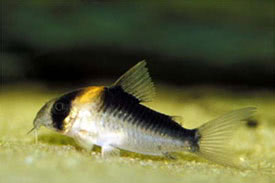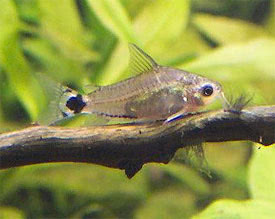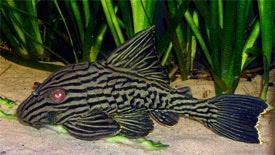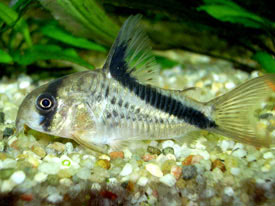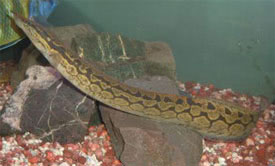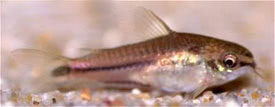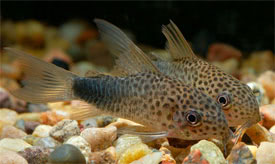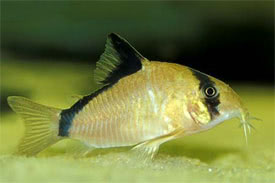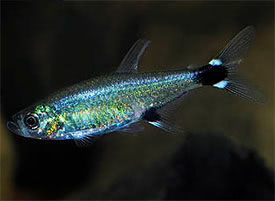
 Magyarul / Hungarian
Magyarul / Hungarian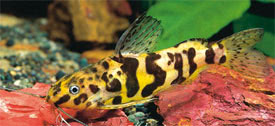
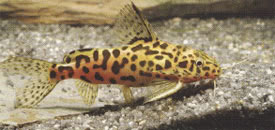
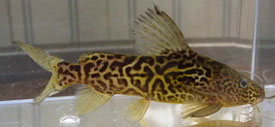

- Scientific name : Synodontis schoutedeni
- Common name: Vermiculated synodontis
- Group: Catfishes
- Habitat: Africa, Congo
- Size: 14 cm
- Biotope: Central and lower Congo in smaller rivers
- Social behavior: Peaceful loner which may disturb some tankmates with its barbels and restless swiming habits. If several animals of the same species are kept together, the larger animals may forcibly chase the smallers away. Not suitable for a community tank.
- Diet: Omnivore, fine to coarse live foods and vegetable fare. Flake and tablet foods.
- Breeding: Very hard, and rare in aquarium.
- Tank: Minimum 150 litres
- Population: 4-5 fish for 200 litres.
- Decoration: Large tanks with sandy to mulmy substrate. Tender plants may be eaten if the food inadequate.
- Temperature: 22-26°C
- pH: 6-7
- Hardness: 1-15 NK°
- Lifespan: 10 years
Description: This fish is relatively compact species. The snout is short and rounded, the barbels are long. The adipose fin is medium-sized, and begins a fair way behind the dorsal fin. The caudal fin is forked for about falf its length; its lobes are broad with slightly rounded tips. The base coloration of the Vermiculated synodontis is whitish-grey to intense golden yellow, sometimes also with a greenish cast. Juveniles exhibit broad vermiculate bands and spots, as well as dots on the head and the fins. As the fish ages the margins of these markings are retained but lighter areas form within, so that an overall leopard-like pattern of fine lines and dots develop. The pattern of small dark dots in the fins is retained. The Synodontis schoutedeni like to rest during the day on vertical roots and stones. The species is sensitive to fresh tap water. If these fishes have nowhere to hide then they often swim restlessly around the aquarium and thus cause massive disturbance to other fishes. They may also try to jump out of the aquarium.
Synodontis schoutedeni has already repeatedly been induced to breed in captivity, initially only after hormone treatment. After a number of days the fishes increasingly left their hiding-places and the male swam around driving the female. The fishes curving around one another in a U-shape and thus forming a "mating ball". During these mating episodes, each of which lasted around 20 to 30 seconds, a total of around 1500 sinking eggs were laid. The larvae hatched after 38-48 hours. Afetr 6 days they were fed for the first time with Artemia nauplii, later with washed and chopped tubifex as well.






























